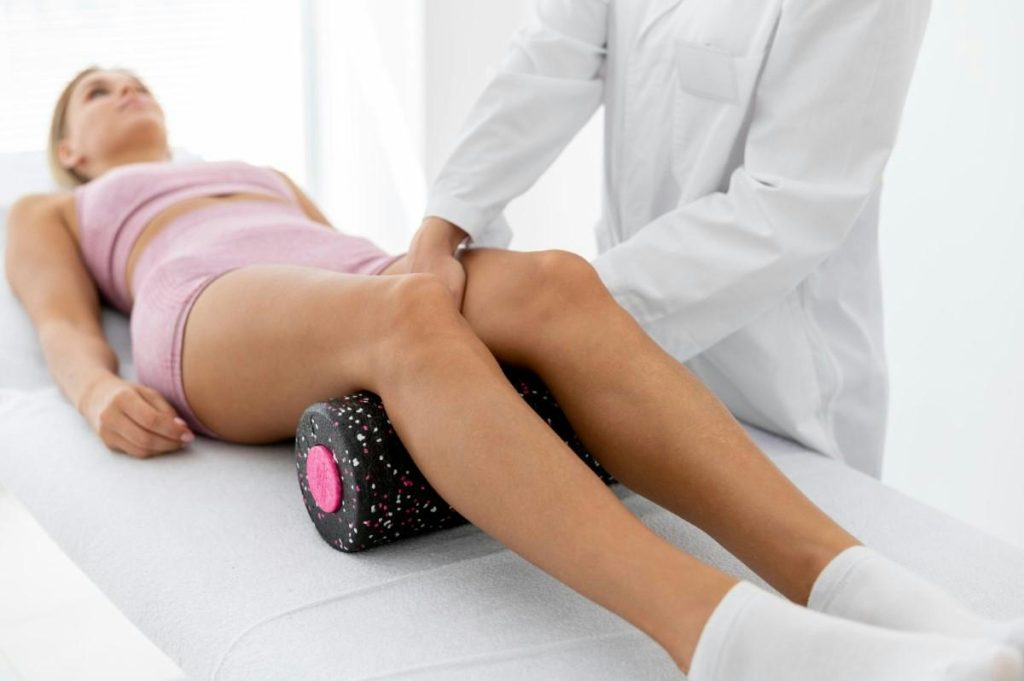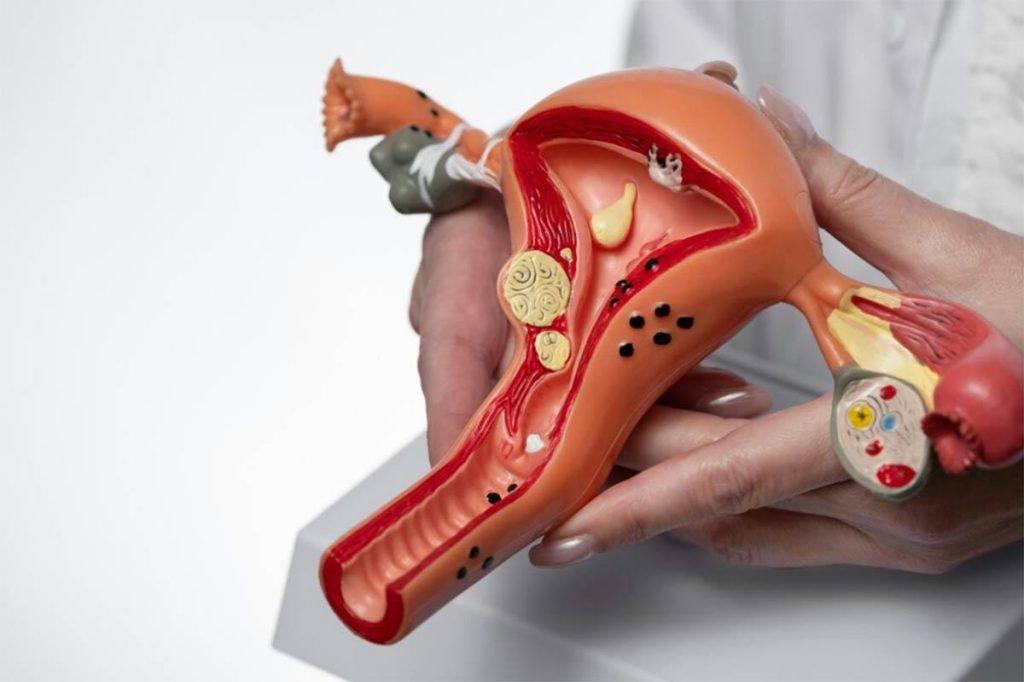
Introduction
Pelvic organ prolapse (POP) is an often overlooked condition that can impact the quality of life for many women. This condition arises when the pelvic floor muscles become weak or compromised, allowing the pelvic organs—the bladder, uterus, or rectum—to descend into the vaginal canal.
In this comprehensive guide, we will explore the symptoms, causes, and treatment options for pelvic organ prolapse, shedding light on this condition to help women make informed decisions about their health.
For more insights about pelvic health. Consider exploring resources provided by Vitality Physical Therapy.
What is Pelvic Organ Prolapse?
Pelvic organ prolapse refers to the descent of pelvic organs from their normal position, creating a bulge or pressure in the vaginal wall. The pelvic floor muscles and tissues act like a hammock to support the pelvic organs. Still, factors like childbirth, aging, and hormonal changes can weaken these structures, leading to prolapse.
A study on women’s health found that prolapse is a very common problem, affecting over 50 percent of women to some extent. Approximately 12 percent of American women may need surgery for it at some time in their lives.
Another study published in the International Encyclopedia of Public Health shows that 65.5 percent of the women in the Women’s Health Initiative had stage 2 or advanced prolapse.
Common Types of Pelvic Organ Prolapse

There are different types of prolapse, each involving the descent of specific pelvic organs. The main types include:
- Cystocele or Anterior Vaginal Wall Prolapse: This type involves the descent of the bladder into the vaginal tissue. Women with cystoceles may experience symptoms such as urinary incontinence, frequent urination, and a bulge at the vaginal opening.
- Rectocele (Rectal Prolapse): In rectocele, the rectum bulges into the back wall of the vagina. This can lead to symptoms such as constipation, difficulty with bowel movements, and a feeling of fullness in the rectal area.
- Uterine Prolapse or Apical Prolapse: Uterine prolapse occurs when the uterus descends into the vaginal canal. Women with uterine prolapse may experience a sensation of heaviness or pressure in the pelvis. They may notice a protrusion at the vaginal opening.
- Enterocele: This type involves the small intestine protruding into the upper vaginal wall. Enterocele can cause pelvic pressure, discomfort, and difficulty with bowel movements.
What are the Symptoms of Pelvic Organ Prolapse?
Recognizing pelvic organ prolapse symptoms is crucial for early intervention and effective management. Common symptoms include:
- A bulging sensation: Women may feel a noticeable bulge or pressure in the vaginal area.
- Discomfort or pain: Prolapse can cause discomfort or pain, especially during activities like standing or walking. This symptom is not common, but can be present.
- Urinary issues: Prolapse may lead to urinary symptoms such as leakage, incomplete emptying, or a frequent urge to urinate.
- Bowel issues: Constipation, fecal incontinence, or difficulty with bowel movements can be associated with pelvic organ prolapse.
- Pain during sex: Some women may experience pelvic pain or discomfort during sexual activity.
What are the Risk Factors for Pelvic Organ Prolapse?
Several factors increase the risk of developing pelvic floor disorder, including:
- Childbirth: Vaginal childbirth, especially if it involves multiple deliveries, can strain and weaken the pelvic floor muscles.
- Aging: The normal aging process can lead to the weakening of pelvic tissues and muscles.
- Hormonal changes: Reduced estrogen levels during menopause can contribute to the weakening of pelvic structures.
- Chronic coughing or heavy lifting: These activities put pressure on the pelvic floor and can contribute to prolapse.
- A Family History of POP: If someone in your family has had POP, you may be more likely to get it yourself. Genetic factors in POP are still being studied, but it’s possible that you were born with a weaker pelvic floor.
Benefits of Pelvic Floor Exercises

Pelvic floor exercises take center stage in pelvic floor 101. These exercises, known as Kegel exercises, are invaluable in promoting pelvic health and preventing pelvic organ prolapse.
Here’s an in-depth exploration of the benefits of incorporating pelvic floor exercises into one’s routine:
Strengthening Pelvic Muscles
The primary objective of pelvic floor exercises is to strengthen the muscles that form the pelvic floor. These muscles act like a hammock, providing essential support to the pelvic organs. By engaging in regular Kegel exercises, individuals can enhance the tone and strength of these muscles, fortifying the foundation that supports the bladder, uterus, and rectum.
Improved Bladder Control
Pelvic floor exercises are particularly effective in addressing issues related to bladder control. Strengthening the pelvic muscles can help prevent stress urinary incontinence, a common symptom of pelvic organ prolapse. By enhancing muscle tone, individuals may experience better control over the bladder, reducing or eliminating instances of involuntary urine leakage.
Enhanced Bowel Control
In addition to benefiting bladder function, pelvic floor exercises improve bowel control. The pelvic muscles play an important role in regulating bowel movements, and exercises that target this area can enhance muscle coordination and function. This can be beneficial for individuals struggling with constipation or other bowel-related challenges associated with pelvic organ prolapse.
Reduced Risk of Prolapse
Engaging in regular pelvic floor exercises serves as a proactive measure in reducing the risk of pelvic organ prolapse. The strengthening effect on the pelvic muscles helps maintain their integrity, minimizing the likelihood of organs descending from their normal positions. This preventive aspect is particularly valuable for women who may be at higher risk due to factors like childbirth, aging, or hormonal changes.
Alleviation of Prolapse Symptoms
For those already experiencing mild to moderate pelvic organ prolapse, consistent pelvic floor exercises can provide symptomatic relief. While these exercises may not reverse the prolapse, they can help manage and alleviate associated discomfort, pressure, or pain. This can improve the overall quality of life for individuals dealing with prolapse.
Enhanced Sexual Function
Pelvic floor health is closely linked to sexual well-being. Strong and flexible pelvic muscles contribute to better sexual function by supporting the pelvic organs. Women who incorporate pelvic floor exercises into their routine may experience improved sexual satisfaction and comfort, even in the presence of pelvic organ prolapse.
Treatment Options for Pelvic Organ Prolapse

When conservative measures like exercises are insufficient, various pelvic organ prolapse treatment options are available, depending on the severity of the prolapse. These include:
- Pelvic floor physical therapy: Specially trained physical therapists can provide exercises and techniques to strengthen the pelvic floor muscles.
- Vaginal Pessaries: These are devices inserted into the vagina to support the prolapsed organs.
- Hormone therapy: Estrogen therapy may be recommended for postmenopausal women to improve the strength and elasticity of connective tissues.
- Surgery: For severe prolapse, surgical treatment may be necessary to repair and support the pelvic organs. Surgical options range from minimally invasive surgery to more extensive reconstructive surgeries.
Prevention of Pelvic Organ Prolapse

While not all cases of pelvic organ prolapse can be prevented, there are measures women can take to reduce their risk. Understanding these proactive steps is essential for maintaining optimal pelvic health.
How to fix pelvic organ prolapse naturally:
- Regular Exercise: Engaging in physical activities and moderate-intensity exercise helps promote overall well-being.
- Maintain a healthy weight: Excess weight can strain the pelvic floor, so maintaining a healthy weight is beneficial.
- Practice good posture: Proper posture supports the pelvic floor and reduces the risk of prolapse.
- Avoid heavy lifting: Minimize heavy lifting activities, as they can strain the pelvic floor muscles. Consult a professional prior to resuming a heavy lifting regimen.
- Quit smoking: Smoking is linked to chronic coughing, which can contribute to pelvic organ prolapse.
Role of Physical Therapy in Treating Pelvic Organ Prolapse

Pelvic floor physical therapy is non-invasive and effective for treating pelvic organ prolapse. Specially trained physical therapists work with patients to develop tailored exercise programs aimed at strengthening the pelvic floor muscles. These exercises not only help manage prolapse symptoms but also improve overall pelvic health.
Conclusion
Pelvic organ prolapse is a prevalent condition that affects many women, but awareness and understanding can empower individuals to seek timely intervention. From recognizing symptoms to exploring treatment plans, it’s essential for women to prioritize their pelvic health.
Whether through pelvic floor therapy, lifestyle adjustments, or medical interventions, there are ways to manage and alleviate the impact of pelvic organ prolapse on daily life.
FAQs
Is it OK to leave a prolapse untreated?
Leaving a pelvic organ prolapse untreated can lead to worse symptoms and a decreased quality of life. While mild cases may be managed with conservative measures, more advanced prolapse may require medical intervention, such as surgery.
What can be mistaken for prolapse?
Medical Conditions such as cysts, tumors, or hernias can sometimes be mistaken for pelvic organ prolapse. Consulting with a health care provider for an accurate diagnosis and treatment plan is important.
Is walking bad for a prolapse?
Walking is an exercise that can be good for one’s overall health. However, individuals with pelvic organ prolapse should consider consulting with their health care provider to determine the most suitable exercise routine for their specific condition.
